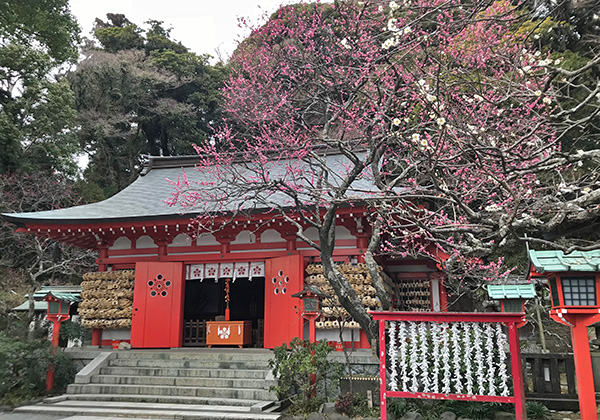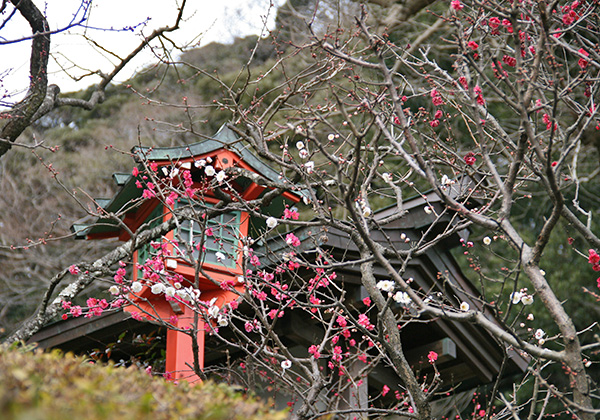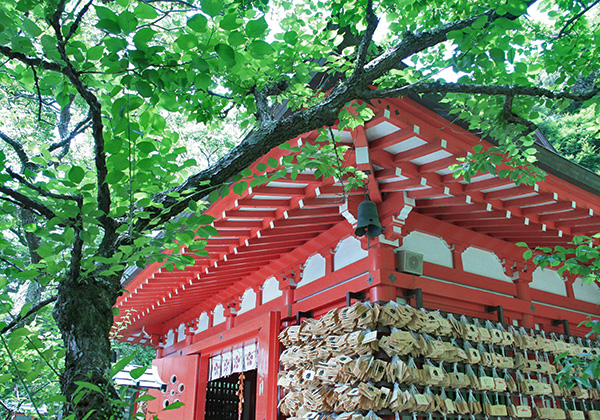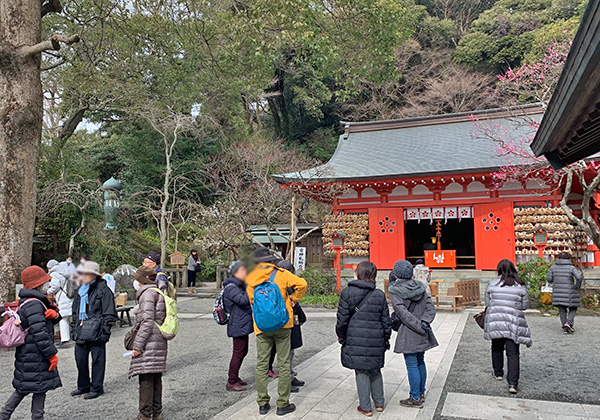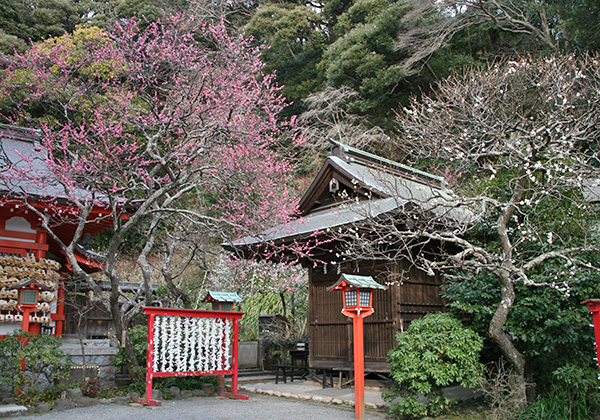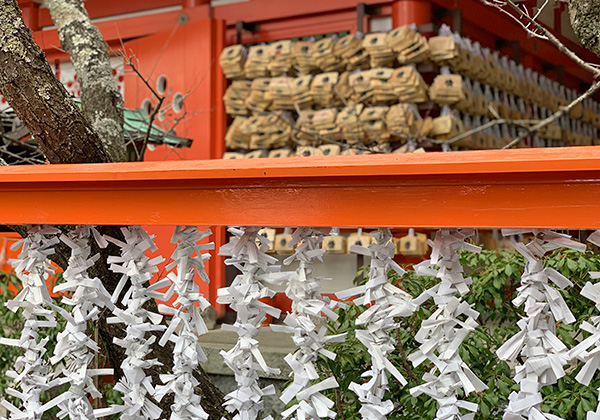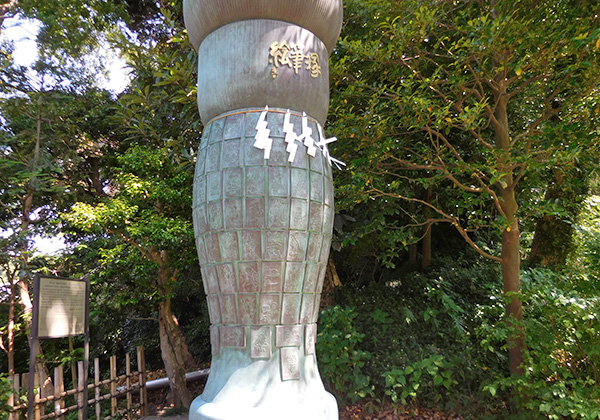Egara Tenjinsha
| Official Name | Egara Tenjinsha {Pronounced eh-gah-rah ten-jin-sha} |
|---|---|
| Religious sect | Shinto |
| Founded | in 1104 |
| Main object of worship | Deity of Scholarship |
| Address | 74 Nikaido, Kamakura, Kanagawa 248-0002 (show route from current location ) |
| Location | 1,500 meters northeast of Kamakura Station |
| Time needed to get there | 20 minutes |
| Admission | Free |
| Phone number | 0467-25-1772 |
| Restrooms | Available |
Historical Overview
There are many shrines called Tenjin or Tenmangu {ten-man-goo} in Japan and all of them are dedicated to the memory of Michizane Sugawara {me-chee-zah-neh soo-gah-wah-rah} (845-903) venerated as a patron deity of scholarship. Tenjin literally means heavenly gods. Michizane Sugawara was of noble birth in Kyoto. Not only was he a great politician, who was promoted to the highest ranking minister, but also was a great scholar and calligrapher. But, his promotion was so fast that his peers were jealous of him. Finally, some of them falsely charged that he was trying to dethrone the emperor. As a result, he was demoted and transferred to a faraway town Dazaifu {dah-zye-foo}, Fukuoka Prefecture, roughly 550 kilometers west of Kyoto.
Masterminding behind his relegation was Tokihira Fujiwara {toh-key-he-rah foo-gee-wah-rah} (871-909), who succeeded in establishing the Fujiwara family as the most distinguished aristocrat. Michizane grieved the transfer and died there in sorrow two years later. His four sons, all serving at the imperial court, also lost their jobs.
After Michizane's death, however, a series of thunderbolt struck Kyoto, one of them striking right on the living quarters of the emperor, and members of the Fujiwara family died one after another mysteriously. The Greek deity Zeus may have taken revenge on behalf of Michizane with its traditional power. Back at the time, thunderbolt was thought to be a typical super-natural power or a divine act. Court people believed those disasters must have fallen on them resulting from Michizane's curse, and thought it necessary to propitiate his soul. Otherwise, revenge would continue to be exacted by the spirits of Michizane and his family. Thus, construction of the shrines to venerate Michizane's apotheosis and soothe his vengeful spirit started across Japan.
Grown up in Kyoto and spent most of his life there, everything evoked Michizane's feelings of nostalgia in Fukuoka. A tanka (31-syllable verse) read by him to express his homesickness for Kyoto is well known to many Japanese even today, which reads like this:
"Ume {woo-may} (Japanese apricot) flowers! Don't forget the springtime even though your master is no longer with you. When an easterly wind blows, be sure to send me your sweet fragrance."
Japanese nobilities those days had a great fondness for plum blossoms and its beauty was widely featured in classical art and poetry. Indeed, Man-yoshu, an anthology of Japanese poetry written in fifth to eighth century, contains 104 poems featuring plum blossoms, as against only 38 for cherry.
Because of this tanka, plum trees are like the symbol of Tenjin shrines and almost all of them have the trees planted at their shrine grounds. Here in Egara, a pair of red and white plum trees are standing in front of the main hall; red one on the right and white one on the left. The red one is said to bloom in late January, earliest in Kamakura. Altogether, about 40 plum trees are planted. The first flower-viewing ceremony of the year in Kamakura takes place right here. On the door of the main hall, the Shrine's emblem with five circles appears designed after the ume blossoms. The five circles and lines in center depict round petals and stamens of the flower.
The Shrine is one of the few religious structures which had existed before the Kamakura Period (1185-1333), and yet who built it is unknown. Legend asserts that on August 25, 1104, well before the military government was established in Kamakura, the spirit of Tenjin descended here. As the site was situated at the northeast direction or Kimon {key-mon} of the Shogunate office, in other words, an tabooed quarter, Yoritomo Minamoto, the founder of Kamakura Shogunate, worshipped it as a guardian deity to ward off evils.
The structure made of the oratory in front and the sanctum in the back was last rebuilt in 1735, using the old pillars and beams of Tsurugaoka Hachimangu Shrine at the time of its renovation. But, the Great Kanto Earthquake of 1923 ravaged many of structures including the Shrine. Tsurugaoka Hachimangu was not exceptional. Hachimangu Shrine immediately built a temporary main hall. After the construction of the permanent hall was completed, the temporary one was brought here, and placed as the main hall of the Shrine. That is what we see today. The two shrines have close relationship as both are associated with the similar Shinto elements.
With the nature of the Shrine as the deity of scholarship, it earned acclaim as a prayer hall for academic achievements. Students preparing for entrance exams flock here in early spring to offer prayers for their successful challenge. Each one buys a sacred, wooden Shinto tablet called Ema {eh-mah} for about 1,000-yen (it depends on what you pray for), on which they inscribe wishes so that they may pass entrance exams, like: "Help me to pass the exam. I want to enter such an such college (or high school)." The Shrine hangs them on the outside walls of the oratory after the Shinto prayer and rituals were performed. Hundreds of those Ema can be seen hung on the Shrine's walls. In exam season, usually January to March, students can visit the Shrine early in the morning of the exam day and ask priests for Shinto prayer with a minimum fee of 1,000 yen.
Egara is among the three largest Tenjin in Japan. The other two are: Dazaifu, where Michizane was exiled, and Kitano {key-tah-noh} in Kyoto. Of a total of 80,000 Shinto shrines in Japan, there are 11,000 Tenjin or Tenmangu.
Inside the oratory, there is nothing particular except Tamagushi (sprigs of the sacred tree) and other objects indigenous to Shinto shrines. The Shrine has a number of important artifacts, though. Most of them are kept at the Kamakura Museum. Shinto shrines usually do not have statues. The Shrine is, however, sacred to the memory of Sugawara, a real human, and therefore, it owns the following two statues of Michizane:
1.
A wooden, sedentary 81.5-centimeter-tall statue carved in 1261. The statue is believed to have been brought to Kamakura when the Sixth Shogun Munetaka {moo-neh-tah-kah} (1242-1274) came down here from Kyoto. It wears court noble's official dress and holds a scepter with both hands.
2.
A wooden, standing 91.3-centimeter-tall statue. Though little is known, it is thought to have been made in the mid-14th century judging from the mode of carving.
Both have indignant aspects, with which Sugawara tried to plead not guilty, and are called "Angry Tenjin". They are on the list of Important Cultural Assets.
